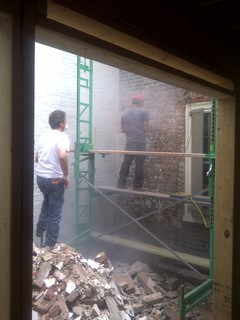5 Steps to Avoid Buying a Money Pit
According to Trulia.com, here are 5 steps that will help you avoid buying a money pit.
- Attend Inspections. When you’re there in person, the inspector is able to physically show you the items that may need repair, and give you their professional opinion of how serious and large needed repairs may actually be at a level of clarity a written report may lack. Sometimes, written inspection reports convey minor items (like reversed hot and cold faucets) as a red-flagged health and safety issue, and more major items (like a problematic foundation) as something that needs further inspection. If you are at the inspection in the flesh, you can brief the inspector on what level of cost and effort you consider major (and vice versa), and ask them to help you understand roughly where the property overall and any individual repairs needed fall, from that perspective.
- Read the Reports and Disclosures. Reading the inspectors’ reports is critical to avoiding a money pit. Things to watch for and investigate further in the sellers’ reports and disclosures include: repairs the seller completed themselves, repeated repairs to the same home system, water and leakage issues, and any reports of non-functionaing mechanical or other systems in the home. In your inspectors’ reports, make sure to notice: repair estimates they offer, items that seem like they will have to be completed soon (versus upgrades you can do over the long run), items that seem like they might run into big ticket dollar amounts, and especially watch for any recommendations that you get a specialist to look at something. Follow up on your reading of reports and disclosures by working with your agent to: list your questions and concerns, ask the inspector and seller any follow-up questions you have, and obtaingin reliable repair estimates.
- Get Multiple Repair Bids. Money pits often occur when buyers take a place knowoing it needs what they thought was a little work, that actually turns out to be a much more costly or involved repair once the actual repiar contractor takes a look or starts the work. Get multiple repair bids from reputable contractors while you are still within the inspection contingency time frame of your contract. These repair estimates can also provider the basis for any renogotiation you and your agent choose to initiate with the seller for price reduction, repairs or increased closing cost credits.
- Stop Overconfidence In Its Tracks. Even if you expect to cut costs by doing some work yourself, I urge you to contact and obtain bids on the repairs and upgrades you plan from actual professionals, so you can at least be armed with the information about what it will cost to get them done if you can’t complete them for any reason.
- Prioritize Price Reductions and Credits over Seller Repairs. For the most part, buyers will select their own materials and repair contractors with more care and are generally more deeply invested in ensuring that repairs are completed to their satisfaction than an outgoing seller. If you are negotiating with your home’s seller over repairs that need to happen, discuss with your agent whether it might make sense to ask for a price reduction or a closing cost credit to offset the cost of the repairs so you can have them completed to your standards, and with the materials and by the contractors of your choice, after clsoing.









 If your children snoop for presents, consider hiding gifts in the trunk of your car — kids will never think to look there.
If your children snoop for presents, consider hiding gifts in the trunk of your car — kids will never think to look there.
